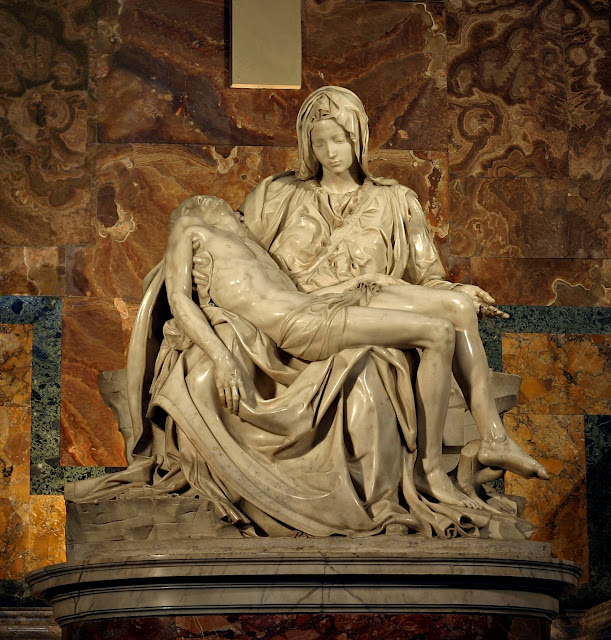It is said that the cardinal Gascon Jean Bilhères de Villiers (1435-1499), the ambassador of the French monarch in the Holy See, commissioned the artist Michelangelo Buonarroti (1475-1564) La Pietà, one of the most important works of Renaissance sculpture.
The Pietà represents a very young Virgin Mary holding the dead Christ. According to the contract signed by both parties, the sculptor would charge four hundred and fifty gold ducats as long as he delivered the work within one year. The Florentine genius completed his sculpture when two days were left to complete the year.
The sculpture is well known by everyone and does not need presentations. Perhaps what is not so popular is that the mouth of Christ has three incisors in the upper arch, instead of two, which is usual. In other words, it has a supernumerary tooth.
The connection with evil
It is known as supernumerary teeth those that exceed the usual dental formula: 20 "milk" or deciduous and 32 permanent teeth. The causes that motivate its appearance are unknown, although the existence of a hereditary pattern has been discovered.
Although supernumerary teeth can appear in any location, the most frequent is in the central area of the maxillary arch, they are called mesiodens.
The depth of the Tuscan's thought can be intuited through his prolific artistic creation, in which theological, philosophical and anatomical conceptions can be guessed. It is known that he had vast knowledge of the human body, not in vain appears on the cover of some treatises of the Belgian physician Andreas Vesalio (1514-1564) participating in a dissection.
If it was not an anatomical error, what did the mesiodens symbolize? We must start from the premise that artists are often the notaries of their time and in the Renaissance the deformities of the body and anatomical anomalies were interpreted by some scholars -like Savoranola- as a figuration of evil. The fifth incisor was a metaphor for evil and sin.
Jesus and the burden of the sins of men
If we look closely at the Sistine Chapel we can discover that in hell there is more than one character with the fifth incisor. A symbolic nod that the Renaissance liked very much, as it represented for five decades, the time between La Pietà (1497-1499) and the Crucifixion of San Pedro in the Pasolina Chapel in Rome (1545-1550).
Now, how can we explain that the sculpture of Christ has a fifth incisor, according to this theological conception? The only possible explanation is that the Son of God has borne all the sins of men and with his blood has liberated Humanity from original sin.
It seems that when La Pietà by Michelangelo was exposed many critical voices questioned whether that genius could be the work of a Florentine -enemies found by the Romans- of 24 years.
The Florentine decided to settle the matter one night. In an attack of anger, of which he was quite accustomed to his contemporaries, he entered the Vatican and secretly chiselled on the ribbon of the Virgin's breast the following message: "Michel Agelus Bonarotus Florent Facieba" (Michelangelo Buonarroti, Florentine, did). In this way, La Pietà became the only work signed by the famous sculptor.
By the way, Miguel Ángel was not the only one to represent these dental malformations, we can also find them in La Pietà by Lorenzo Salimbeni (1568-1613) and in the Illustrations by Sandro Botticelli (1445-1510) for the Divine Comedy.











No comments:
Post a Comment